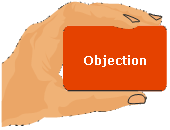Sales professionalism 10
By: Dr. M. Shehab
All rights reserved to the writer
Now we are in one of the most important step in sales call which is handling customer response. Customers always have objections during the presentation. The problem can be either logical or psychological and objections are often unspoken.
Due to the importance of this step we advise salesperson to be trained in skills of handling objections. During role plays in all training sessions this step is very critical and all sales people or medical reps can stop the role play when customer arises an abnormal objection.
Actually customer response may be positive, negative or negative – positive. Medical rep should use a positive approach, seek out hidden objections, asks the customer to clarify any objections, take objections as opportunities to provide more information, and turn the objections into reasons for buying.
Positive response arises from accepted customer that he accepts all product’s benefits. You must ask him directly for prescriptions seek for an opportunity to increase the prescribing rate by add new indication or compete with another competitor with more benefits in the same indication.
Negative positive response arises from skeptic customers when he doubts about the benefits of your products. You can manage his response through restating the product’s benefits to him and offering a proof. A proof may be a clinical trial endorses your product or samples where he can try it with his patients. You must support and endorse this type of customer help him to take the right decision.
There’s also a pure negative response where your customer completely refuse your product without any known reason. He is satisfied with the competitor’s product. You must go with him through a series of closed probe till you discover his need and the reason for rejection your product and try to handle it.
Negative positiveresponse: a lot of people would think that an objection is a barrier or a hurdle. This is not true because an objection is a chance to sell. Your customer is thinking about your product but he has areas of doubts or unsatisfied needs. If you can respond to him effectively and satisfying you are close to a sale.
Before you handle your customer’s objection listen to him carefully don’t interrupt. Show him empathy and show him that you want to listen. Repeat the objection to make sure that you understand the concern clearly.
Objections are two types one is called false which is psychological or emotional and the other is called true which is logical or rational.
In false objection there’s incorrect information your customer receive it about your product (misunderstanding). Your role here is to correct this wrong information by rephrase it and then answer it through direct or indirect denial.
In true objection first, let’s agree product without any drawbacks does not exist so, every product has one ormore weak points (Remember SWOT).
There are many methods to handle these objections:
1- Compensation: You compensate for the defect by adding benefits in other terms diluting the objection with benefits.
2- Feel – felt found: You actually say, “I know how you feel, Dr. XYZ, I felt the same way, but I found that it is affecting the therapy”.
3- Boomerang:You turn the objection into a reason to buy.
4- Postpone: Quite useful when your customer asks about the price early in your presentation when he hasn’t seen the benefits yet. You must ask his permission to respond to this point later, after you have covered an important point.
5- Pass up: When you have no answer to an irrelevant objection or excuse you acknowledge and then go back to where you have stopped.
Finally remember that an objection is nothing more than a question, expressed under the tensionof making a decision.First thing to do is to relieve the tension that is relatively easily to do with the question behind the tension.
Remember also that objections are our friends; they help us know what is going on in the customer’s mind. But they often come at the wrong time just as we’re covering an important point.Even so, we should
have a positive attitude about them.
I will be happy with your comments:


